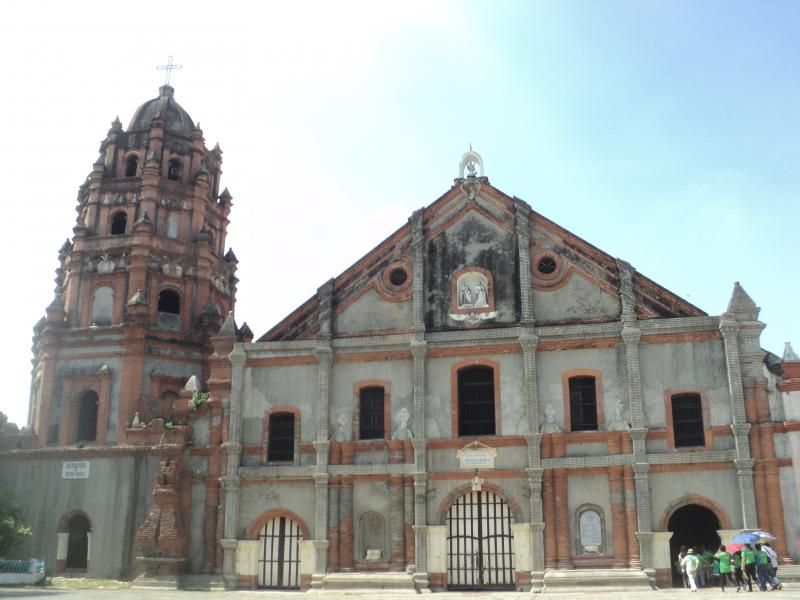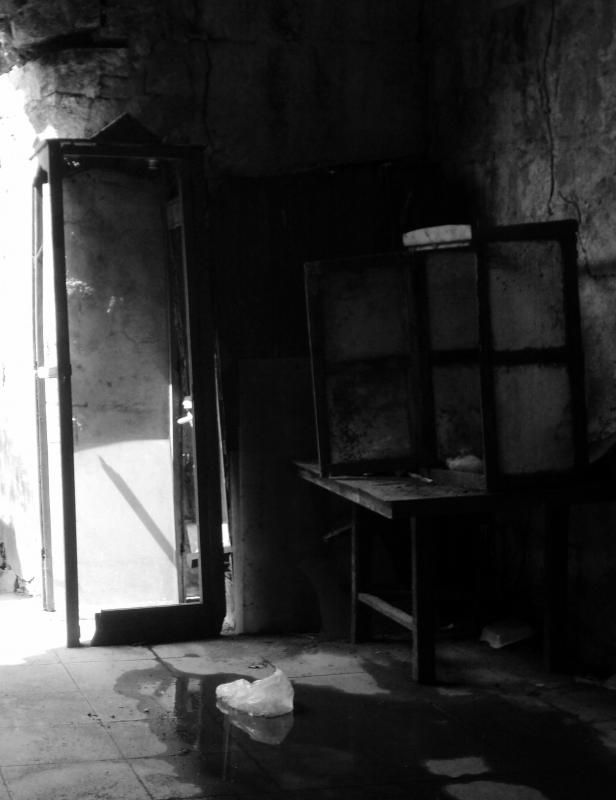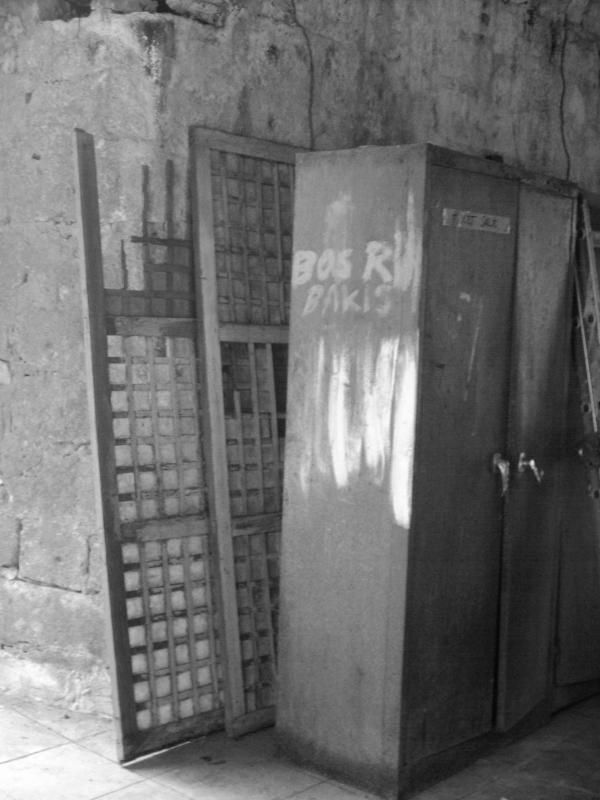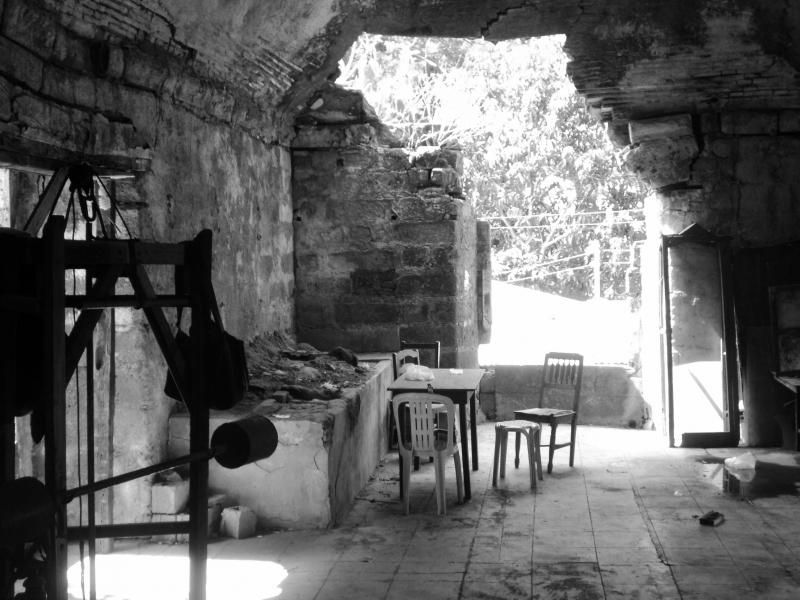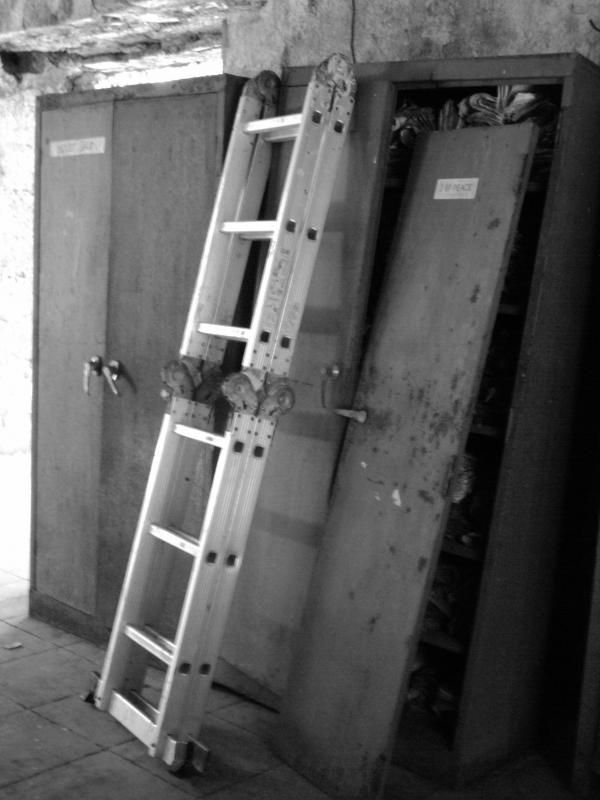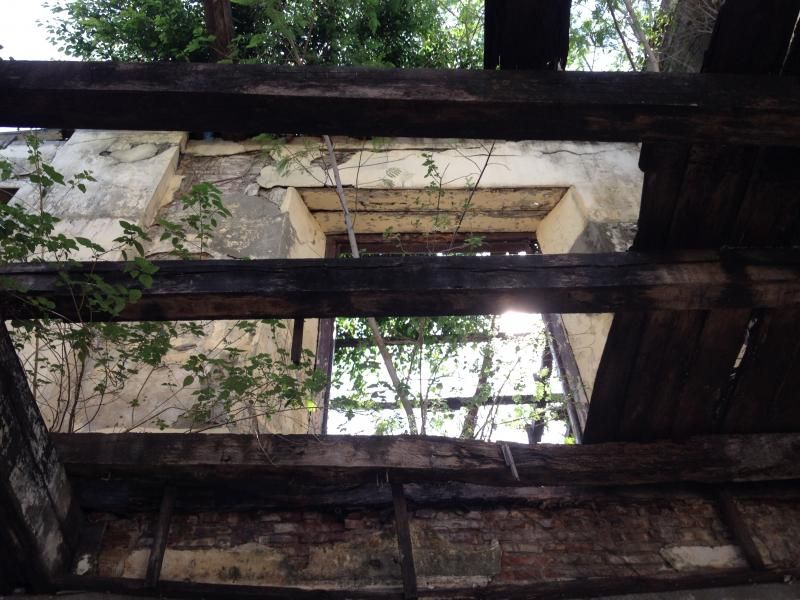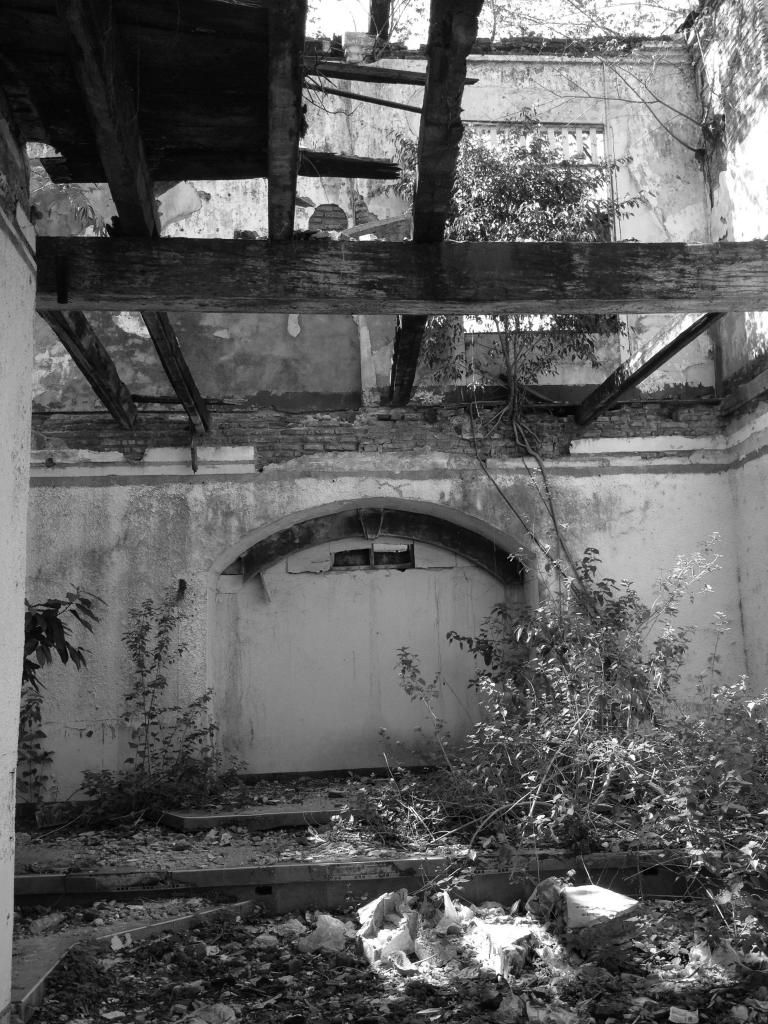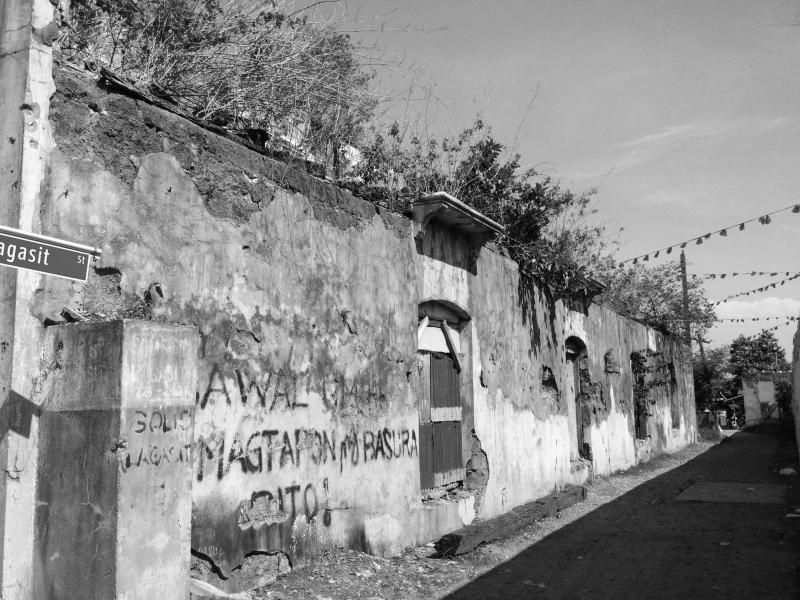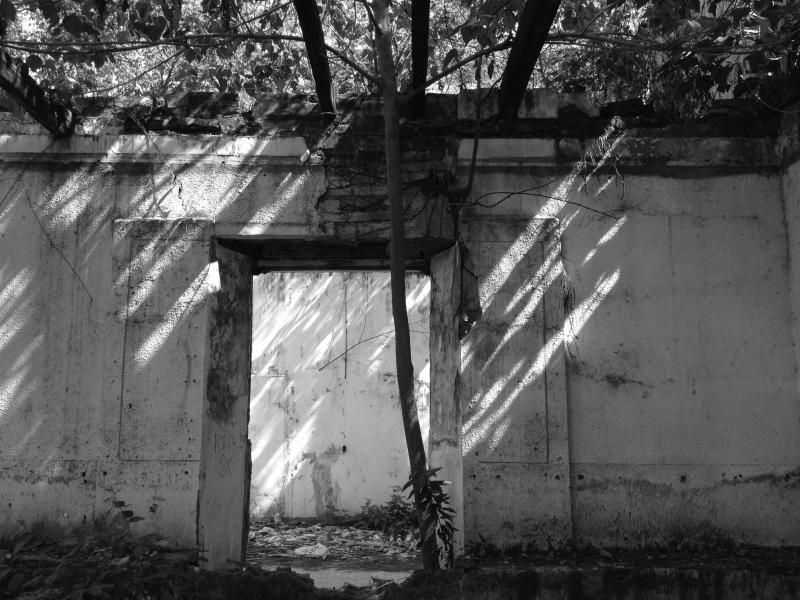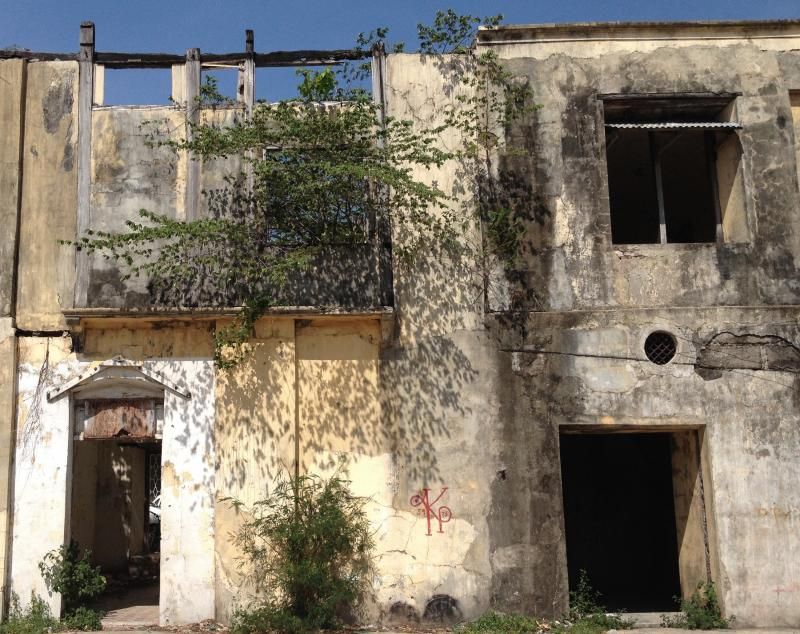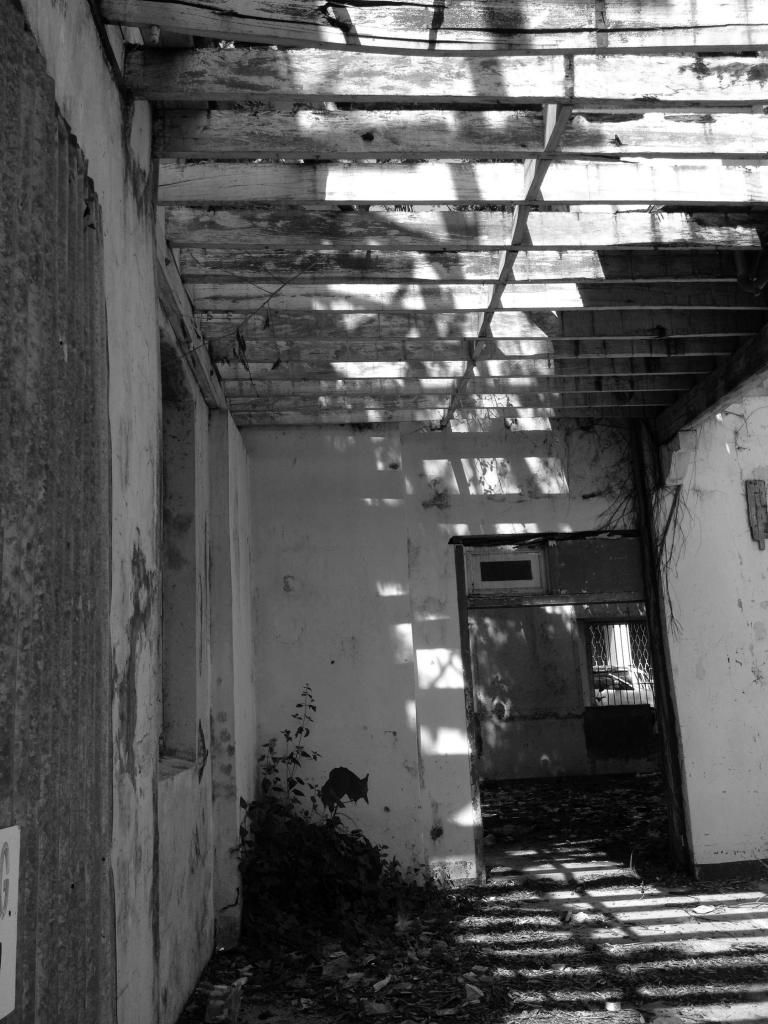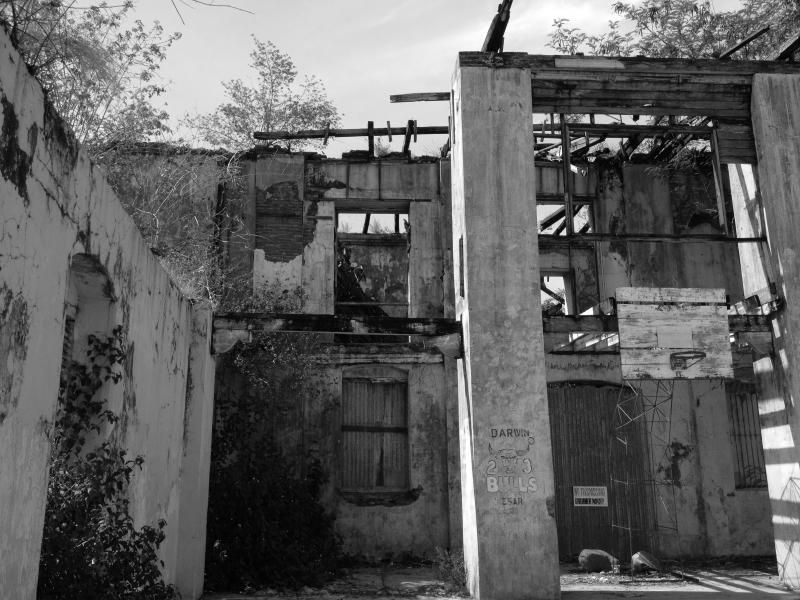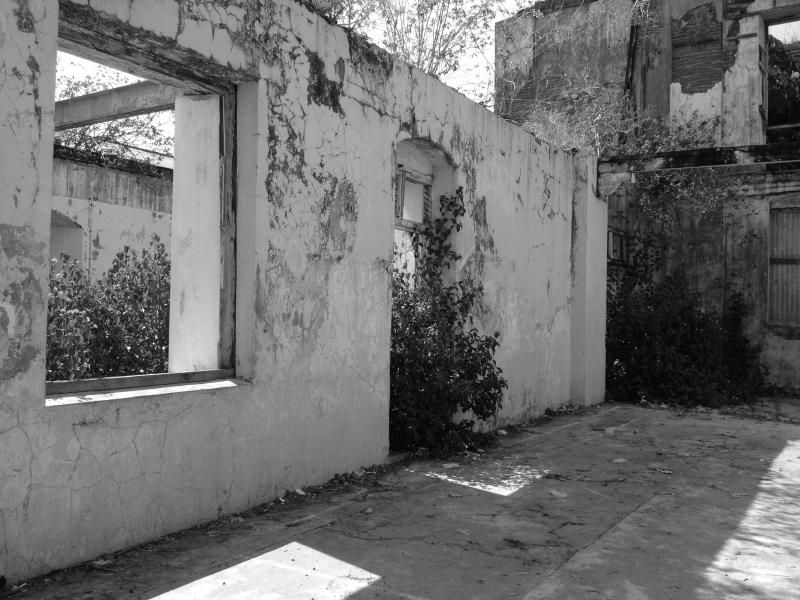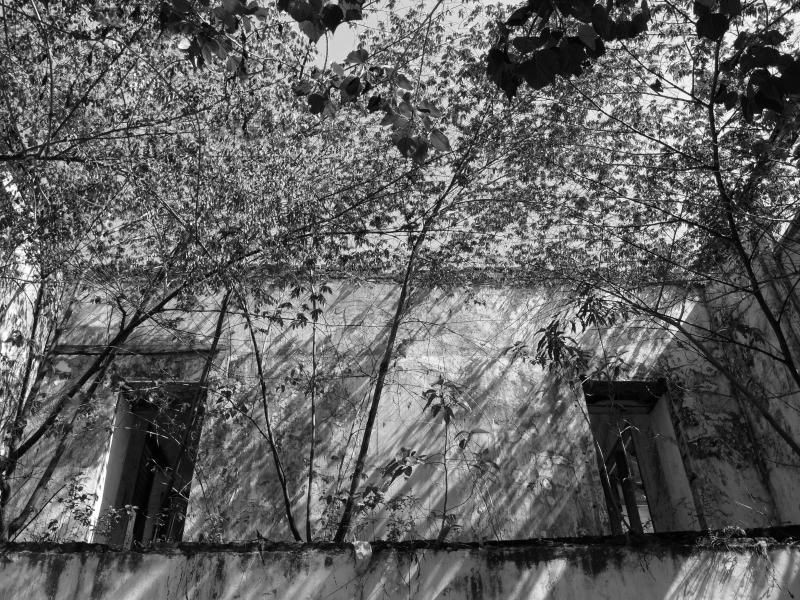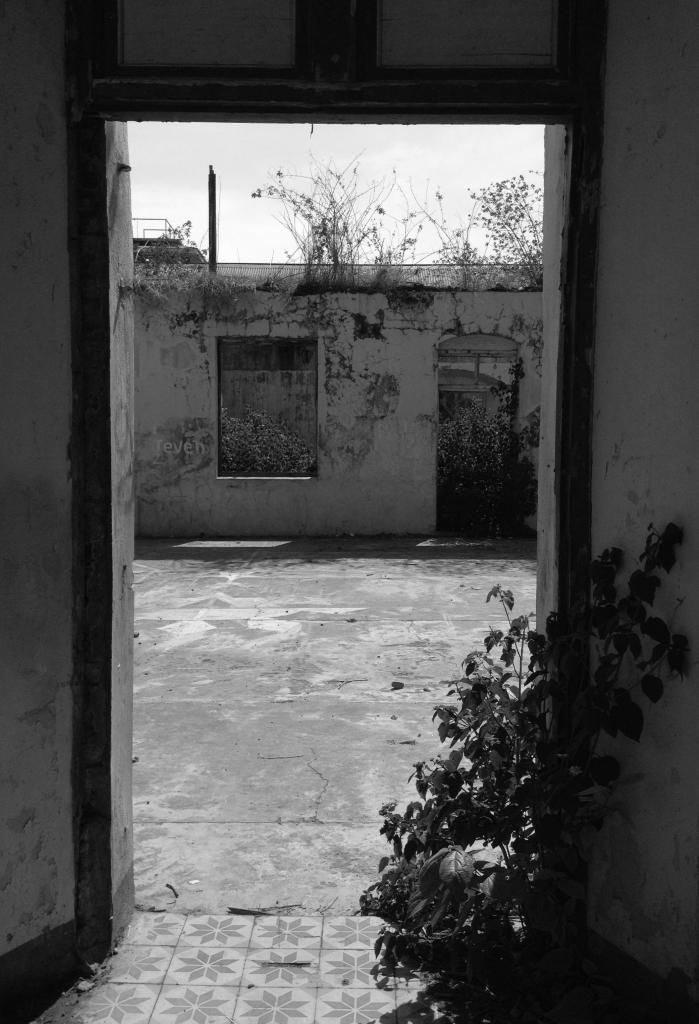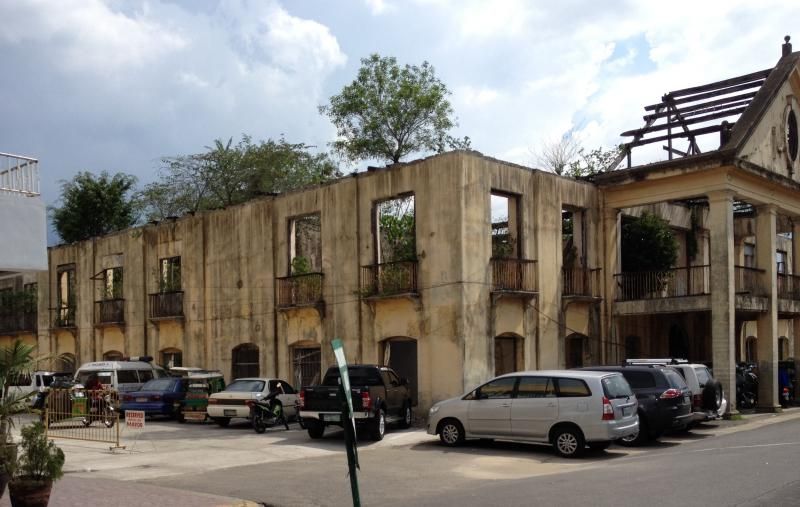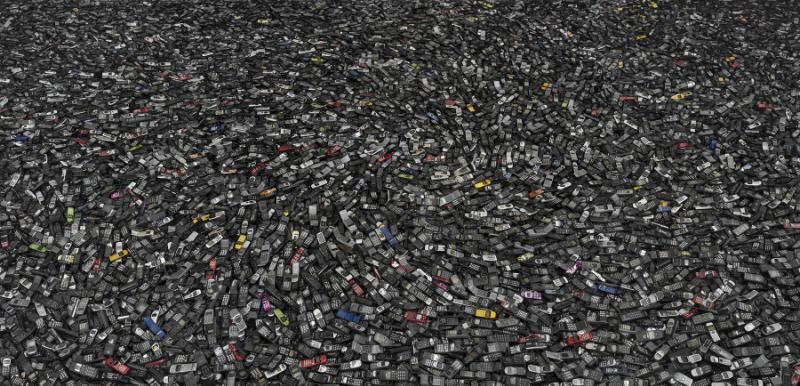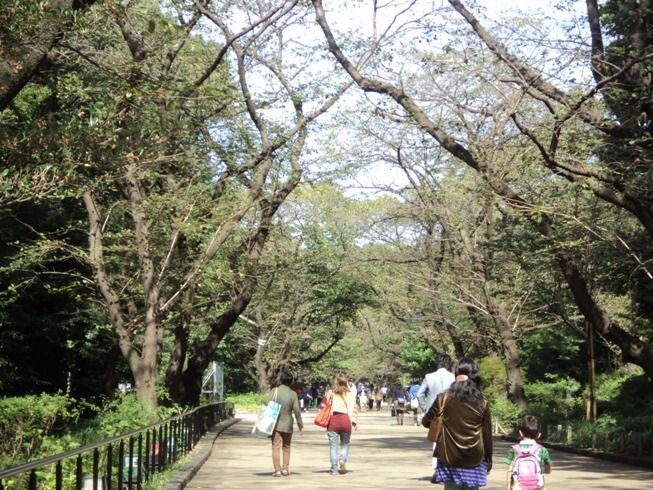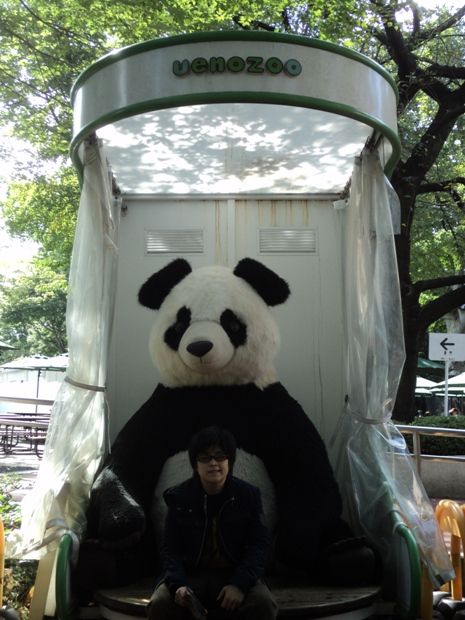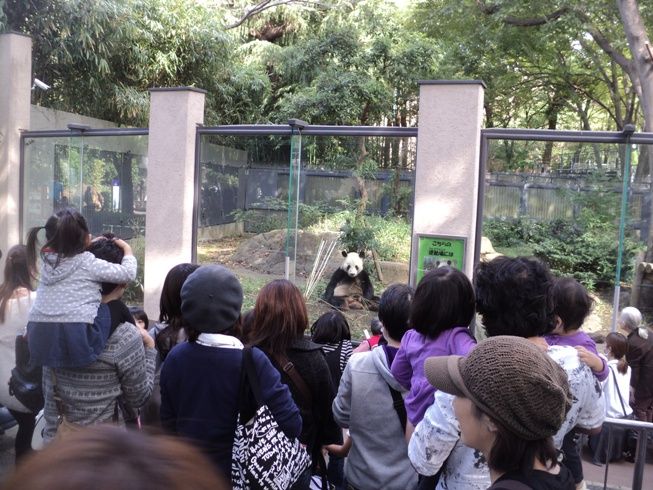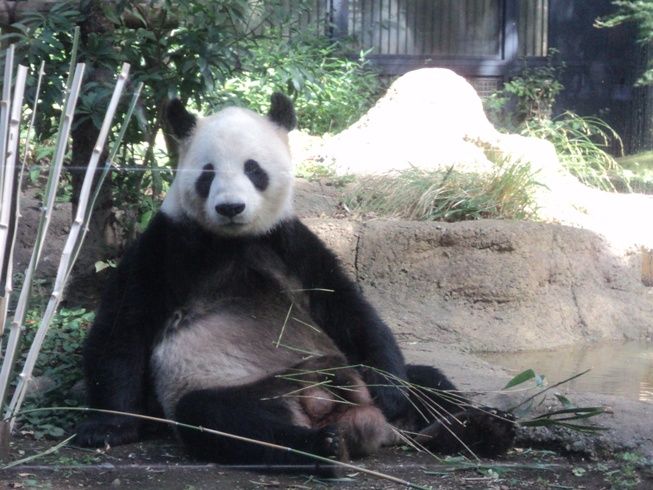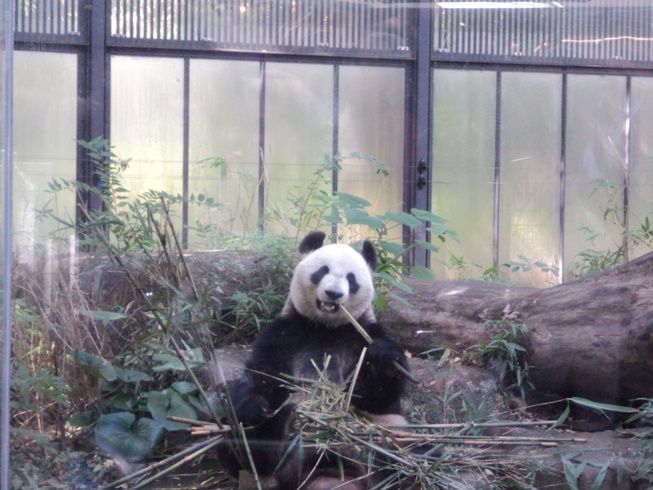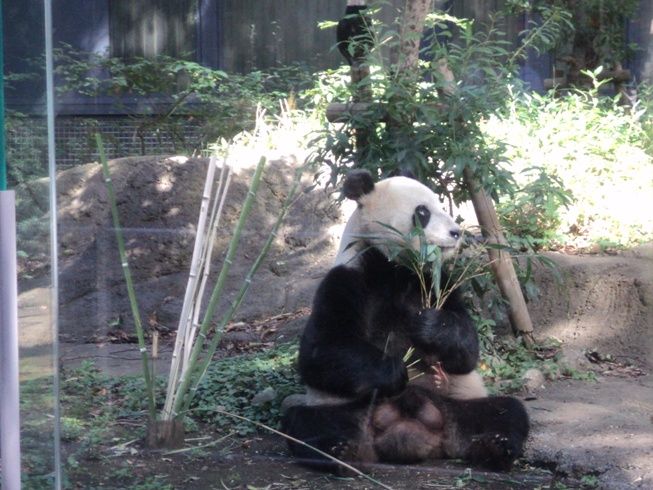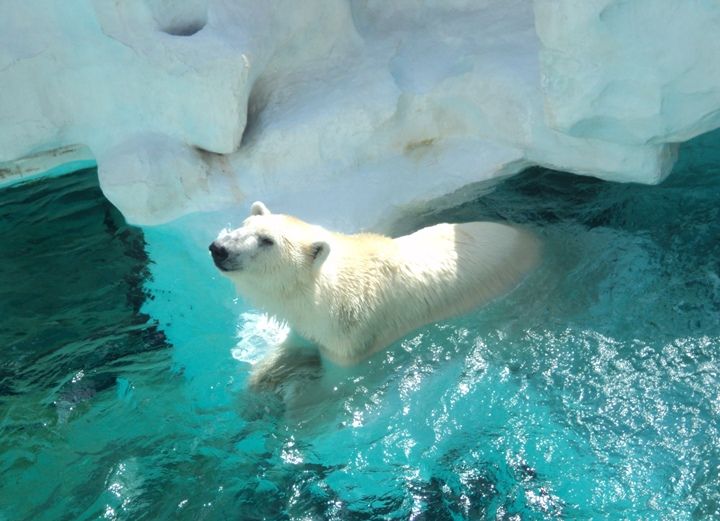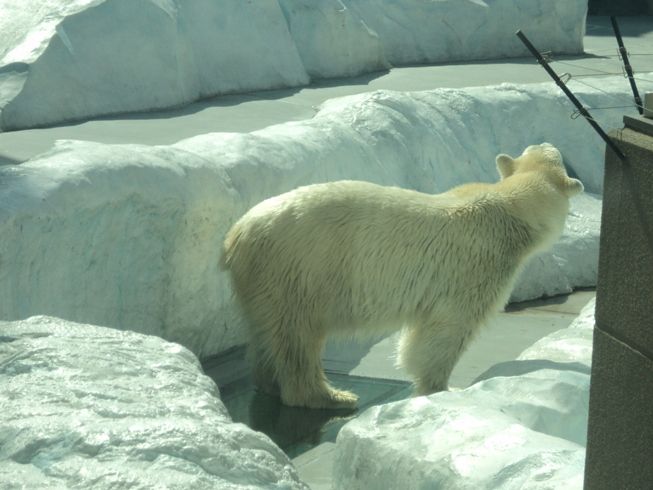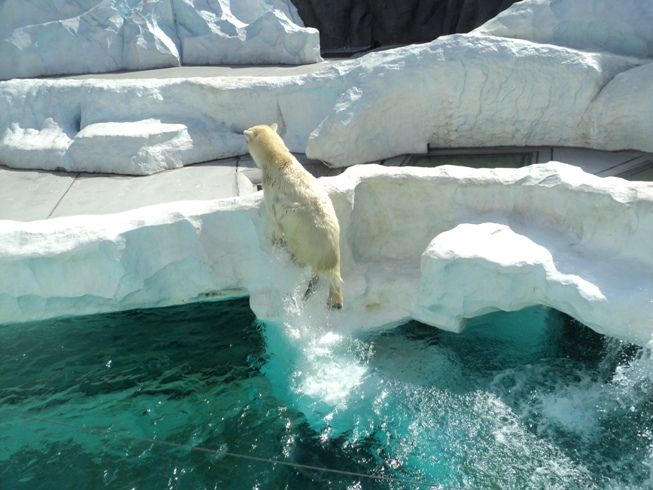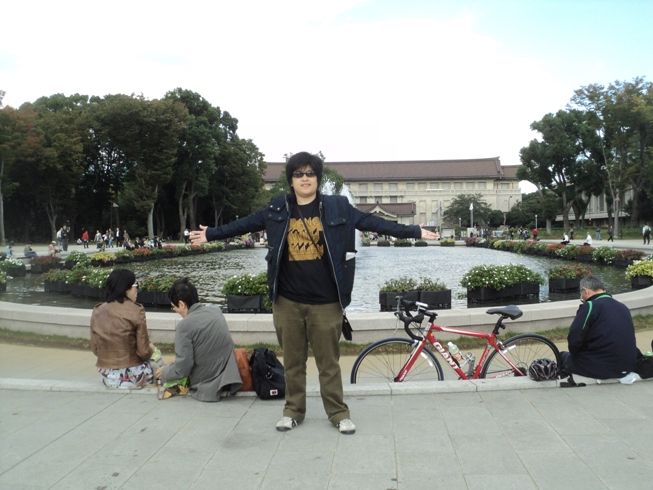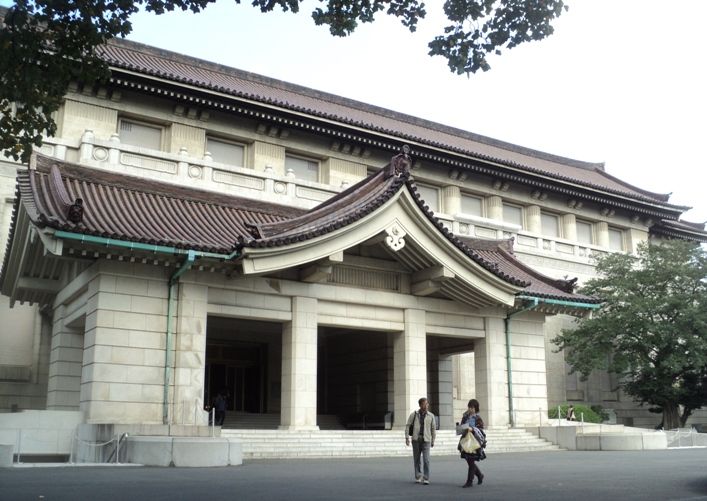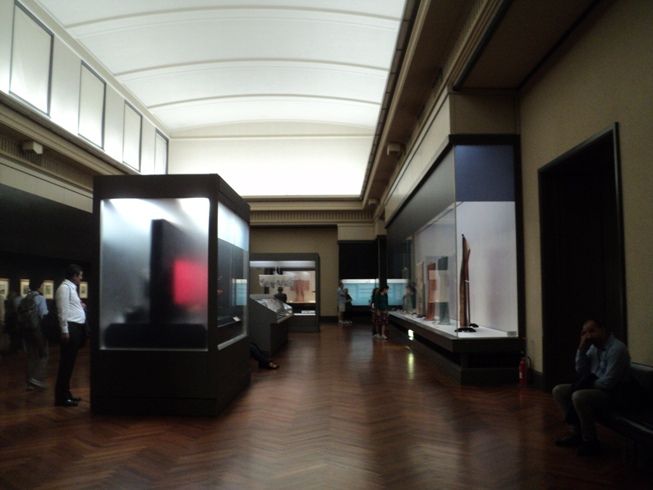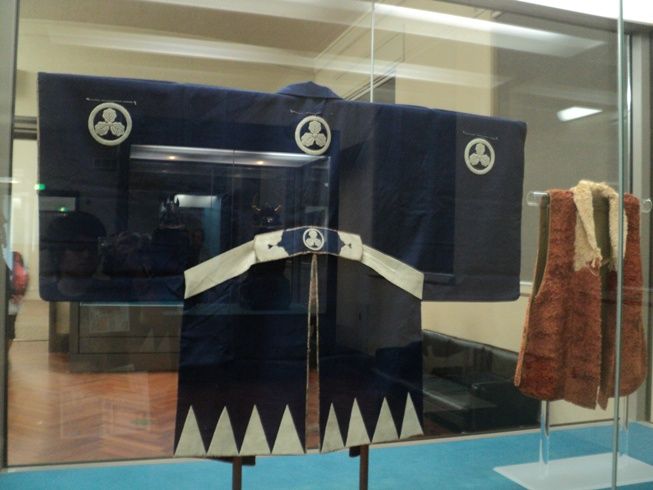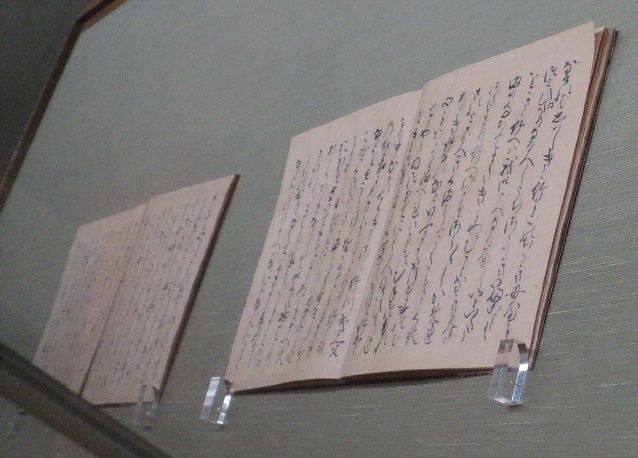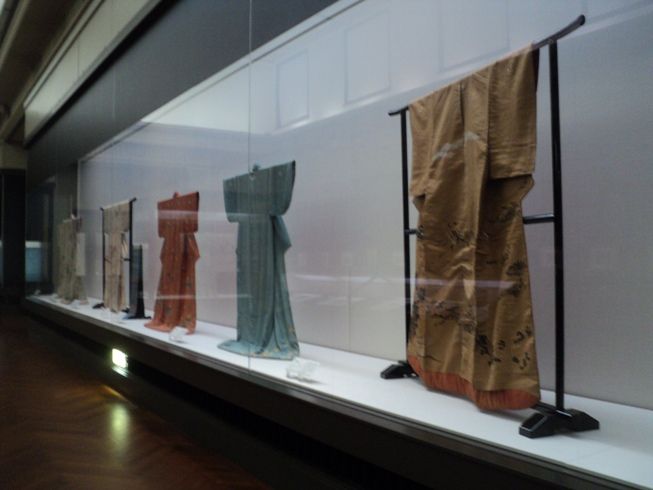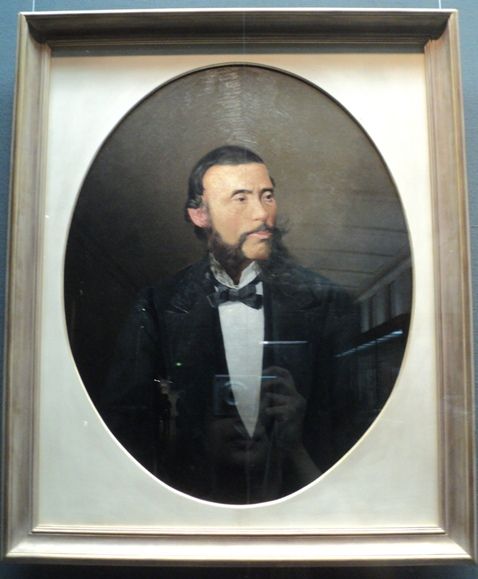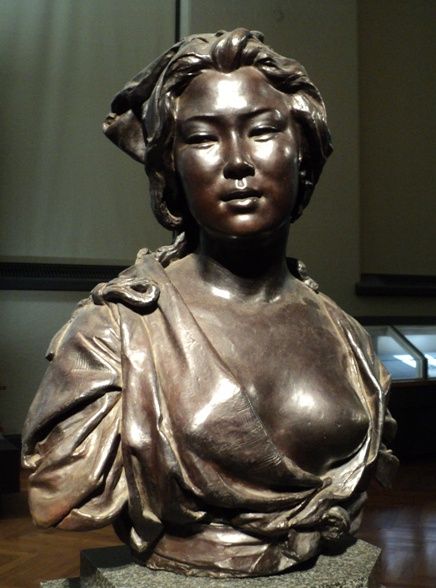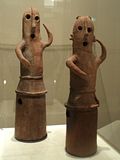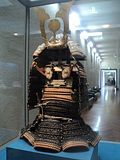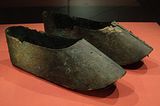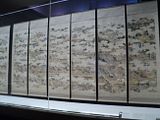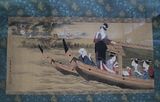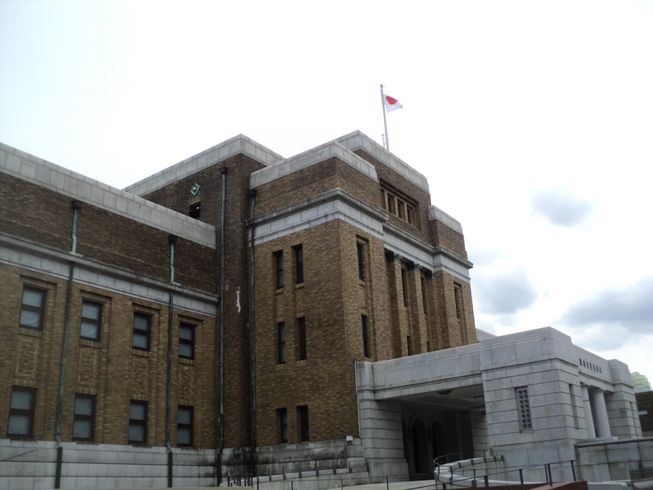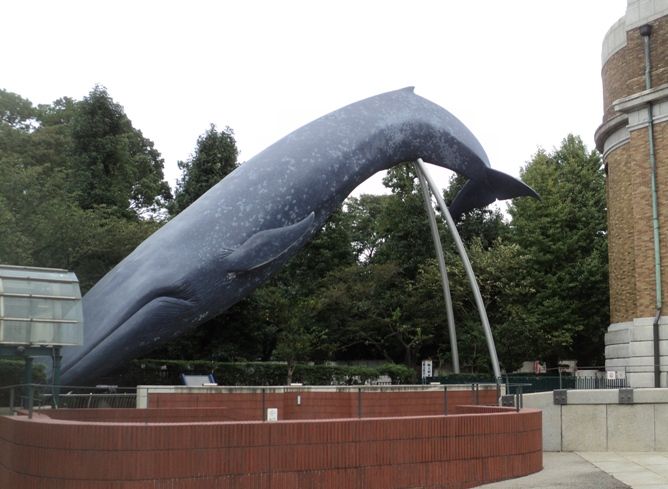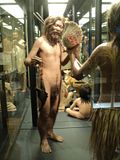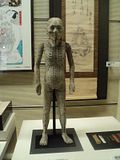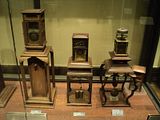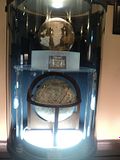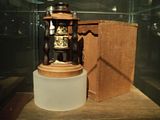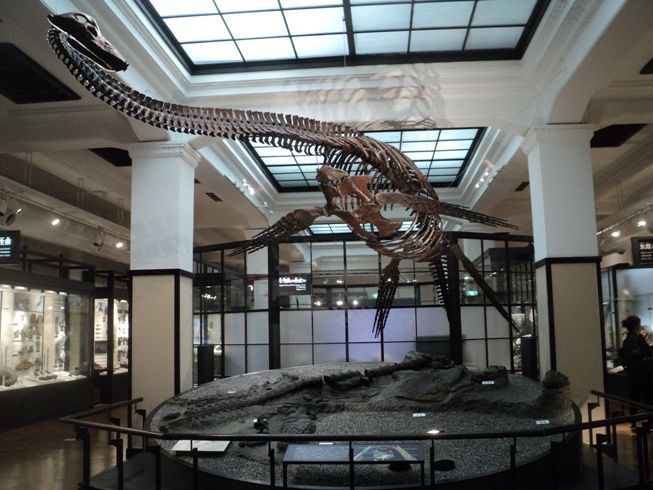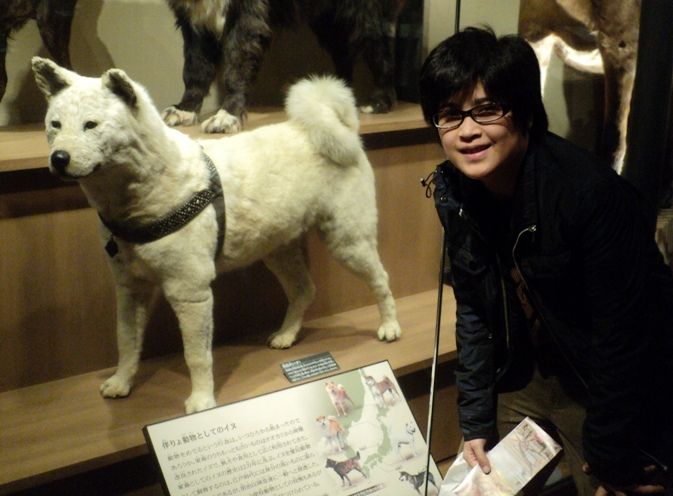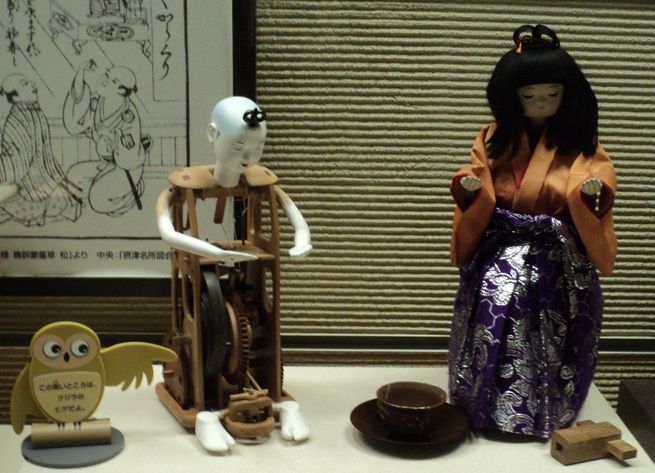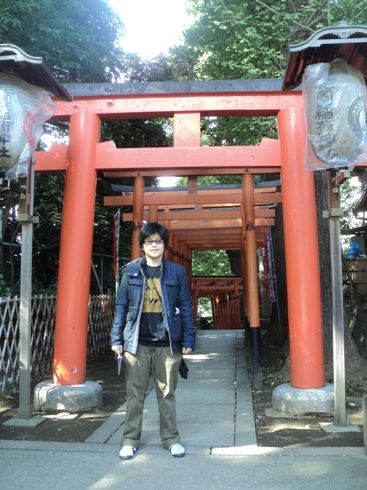I also sent my legal name hehe...
Thursday, October 23, 2014
Wednesday, October 22, 2014
There was an episode of my life that comes into my mind whenever I am faced with uncertainties of the future. When I was still very little, I was probably 5 or six, I was playing with my siblings, I can't remember what we were exactly playing, but in the middle of it, I suddenly felt a chill in my spine. For some reason, the thought of growing up popped into the realms of my thoughts. I remember seeking refugee in the corner of my bed, hugging my bent knees. The thought that one day, all those carefree days would disappear scared my very young mind.
*finger snap*
That day is here. When I think about that weird episode, I realize that it must have been a premonition. To this day, I am afraid. Not of responsibilities, neither the failure to deliver those responsibilities, but the idea of not having a place to belong when everything fails. Gone are the carefree days. Now I have to constantly think of meeting and even exceeding expectations.
And what about my own aspirations? What happens when the person I visioned myself to be turns out to be too far-fetched for my own capabilities? I can't remember how many times I failed, but the restarting point is always scary simply because everytime it happens, I have no idea how to begin again.
I am tired.
I am tired.
I need my Nth aha moment. Oprah has been off the air for 4 years.
Where do I go next if all fails, which, the way I see how things are going, I will.
All I wanted is to serve my purpose in this world. A deeper meaning to my existence. Just when I thought I have found it, I am faced with the reality, it's not that easy.
I am tired.
Someday, this abuse of energy will cost me so much, I will regret it. As early as now I regret it. But quitting is not an option, not now. But how long do I keep on fighting and when do I give up? I may face failure in the end, and break my heart all over again.
Oh Peggy Lee, please answer me,
I am tired.
Someday, this abuse of energy will cost me so much, I will regret it. As early as now I regret it. But quitting is not an option, not now. But how long do I keep on fighting and when do I give up? I may face failure in the end, and break my heart all over again.
Oh Peggy Lee, please answer me,
is that all there is?
So the search continues...
Sunday, September 14, 2014
Back in that loop...
I have so many things to do, work and school deliverables and deadlines to beat. But I've been staring in front of my laptop for hours and nothing really materializes. Why is that, I asked.
I am so tired...
Also, I've been having a lot of philosophical discussions lately, and I realize this mounting pressure to confront an unresolved issue from my past is becoming more and more evident. These signs are telling something.
No matter how smooth the sailing has been, that missing piece will continue to haunt you.
I am tired... tired of speaking in puzzles.
But when will that courage come?
I have so many things to do, work and school deliverables and deadlines to beat. But I've been staring in front of my laptop for hours and nothing really materializes. Why is that, I asked.
I am so tired...
Also, I've been having a lot of philosophical discussions lately, and I realize this mounting pressure to confront an unresolved issue from my past is becoming more and more evident. These signs are telling something.
No matter how smooth the sailing has been, that missing piece will continue to haunt you.
I am tired... tired of speaking in puzzles.
But when will that courage come?
In the space between truth and lies, I started to disappear...
Monday, June 02, 2014
Semi-Haikyo: A Spanish Clay Kitchen
Calasiao Pangasinan's Saints Peter and Paul Parish church is one of the National Cultural Treasure declared by the National Commission for Culture and Arts. Like many historical structures of the Philippines, it survived devastation of wars and natural calamities. A baroque church generously ornamented with bricks, a heritage and architectural pride of Pangasinan, it is sure to draw and awe any curious tourist.
But on the right wing of the church, at the back of the convent, is a rarely visited and less popular attraction, a clay kitchen or "pogon" originally used by Dominican friars, I can't decide if it's really abandoned or neglected, but definitely on the verge of urban decay.
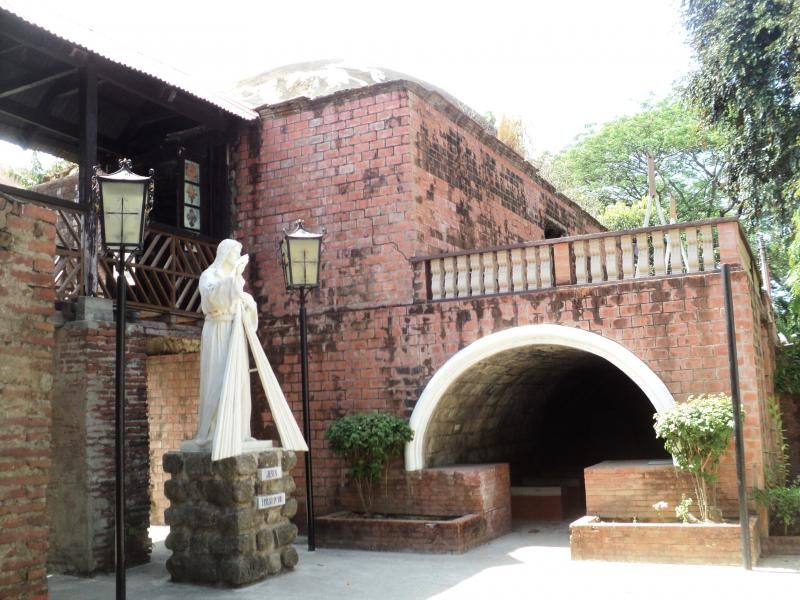
Covered with bricks and a dome roof, the clay kitchen is rather inconspicuous with attached cave featuring a nativity scene (it's inside)
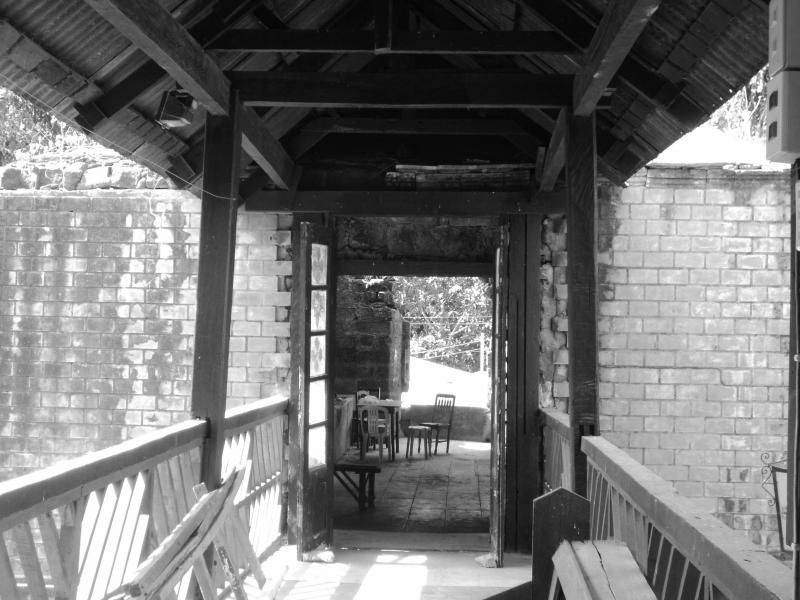
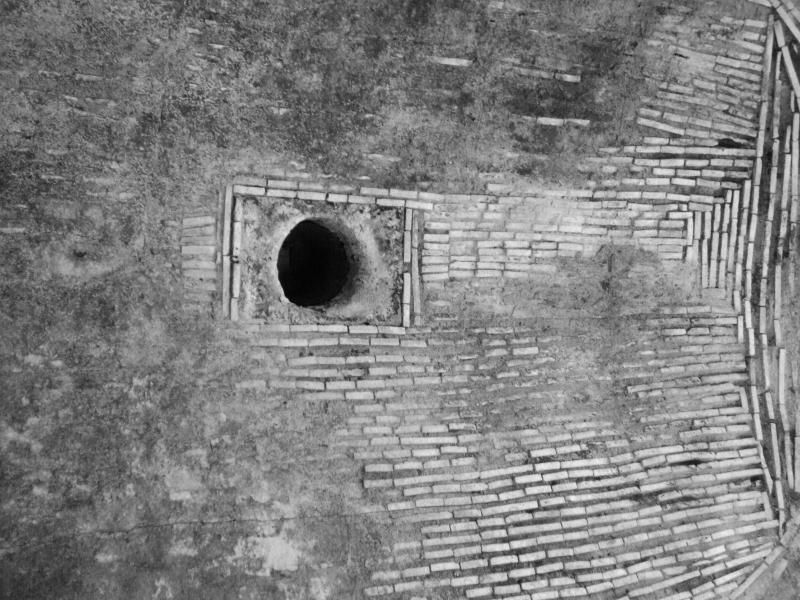


Covered with bricks and a dome roof, the clay kitchen is rather inconspicuous with attached cave featuring a nativity scene (it's inside)


decayed ceiling

The presence of a fluorescent light bulb means the area is still in use... But nothing more than a storage of things that had reached their end of life stage.
And perhaps of records not worth archiving?
Gambling is prohibited in Catholic church, but when I saw this, Tong-its and poker are the first things that popped out of my head.
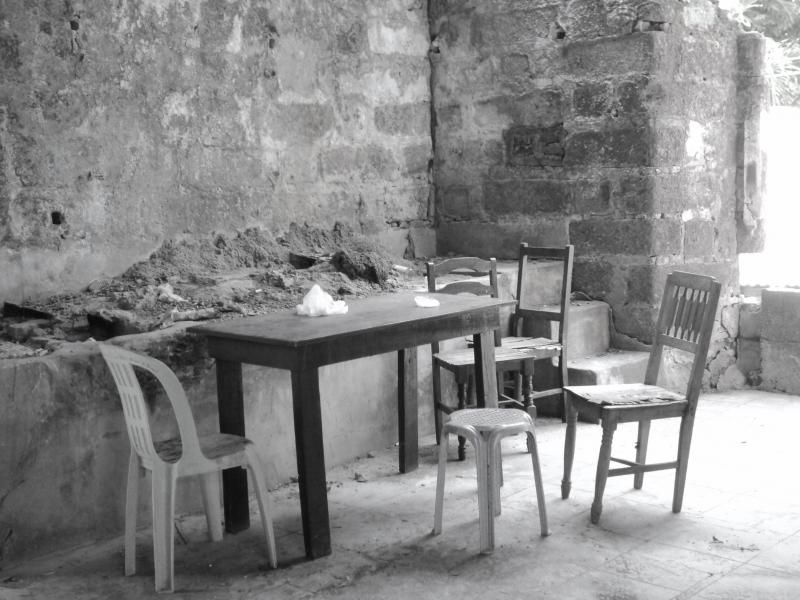
A funny story, in my desire to shoot a different angle of the structure from afar, I walked away from the back side to point and shoot, but the odds were against me when I hear threatening barks, I looked around and saw 3 dogs approaching me. I freaked out and run, thinking Pangasinan is among the provinces with highest cases of rabies. Ngiiii!!! Good thing I had an umbrella with me, I faced my pursuers and made a hiten mitsurugi amakakeru ryun no hirameki stance (I like using big words when I can't describe something, rest assured that no dogs were harmed). It scared and stopped them from pursuing me so I was able to walk away without scratch. Whew! If anything, I realized doing a haikyo exploration alone can be dangerous.
Gambling is prohibited in Catholic church, but when I saw this, Tong-its and poker are the first things that popped out of my head.

A funny story, in my desire to shoot a different angle of the structure from afar, I walked away from the back side to point and shoot, but the odds were against me when I hear threatening barks, I looked around and saw 3 dogs approaching me. I freaked out and run, thinking Pangasinan is among the provinces with highest cases of rabies. Ngiiii!!! Good thing I had an umbrella with me, I faced my pursuers and made a hiten mitsurugi amakakeru ryun no hirameki stance (I like using big words when I can't describe something, rest assured that no dogs were harmed). It scared and stopped them from pursuing me so I was able to walk away without scratch. Whew! If anything, I realized doing a haikyo exploration alone can be dangerous.
Labels:
architecture,
Haikyo,
Philippine Heritage,
travel
Thursday, May 29, 2014
Haikyo #2: Casa Real in Lingayen Pangasinan
My trip to Lingayen Panagsinan was an official business, naturally I didn't have the time to explore the place as I would have wanted to but I managed to make a very short side-trip when I saw a haikyo structure in the middle of the busy capital. The Casa Real is a historical building seated to another heritage structure, the Pangasinan Provinicial Jail. Its sorry state is appalling, if you only knew the history of the building.
Pangasinan Provincial Jail
Casa Real facade
Casa Real literally means "royal house", built in 1840s and one of the first public buildings to be constructed with brick. The alcalde-mayor (functions as governor AND magistrate) resided and held office here. Later on, it was called the Gobierno, in 1886 when the position of Gobernador Civil was created to perform the executive function of the Alcalde Mayor and the latter retained his judicial function only.
During revolution, the Spanish soldiers and the Voluntarios Locales (native recruits of the Spaniards who fought the Katipuneros) holed out at the Casa Real. On June 29, 1898, the Pangasinan Katipuneros planned to capture Lingayen by taking Casa Real. They secretly meet in the evening in Brgy. Domalandan and crossed the river to the Baraca St. but were detected prematurely and got massacred. This street is now called Heroes St.
On February 16, 1901 Judge William Howard Taft and his three commissioners formally organized Pangasinan as a civil province, Lingayen remained the capital municipal because of the existence of provincial buildings there, Casa Real retained its capitol function.
In 1919, the capitol moved to its current location, near Linagayen beach, and Casa Real was used as a public elementary school for about three to four years before it became a Regional Trial Court.
could this be one of the classrooms?
During World War II, the Japanese used the building as their office. After the war, when the new Capitol building needed extensive repair because of the damage inflicted by the American naval bombardment, the provincial offices had to move back to the Casa Real until the repair work was done.
The remaining planks reminds me of an Inari shrine tori
Surviving several earthquakes and the bombings of WWII, it was declared a National Historical Landmark by the National Historical Institute in 2002, with 95% of its original materials intact. But in 2008 super typhoon Cosme ripped off a part of its roof and looters saw the chance to steal ballustrades, wooden floor planks, doors and windows. The municipal government offices occupying it, like Sangguniang Bayan, and DSWD, vacated the place and it became an empty shell.
The Pangasinan Heritage Society, Inc. (PHSI) was granted permission to clean up the building and protect it from further vandalism while waiting for restoration. But after a year, PHSI ran out of funds to sustain the protection of the building and it was again vandalized by thieves who yanked out the remaining doors, windows and iron grills.
Several appeals were made to restore the building. In 2010, Governor Amado Espino pledged to restore it. The PHSI and Provincial Engineering took the remaining wooden materials for safekeeping. In January 2012, Congressman Leopoldo Bataoil (Pangasinan, 2nd district) agreed to allocate part of his pork barrel to restore Casa Real and the provincial jail. Then we all know what happened when the PDAF scandal blew up and now I don't know what the fate of this historical structure would be.
From trial court to basketball court?
I hope it won't be a haikyo for too long, It is a witness to many lives of different generations and a survivor of harsher times, it deserves to be restored to its old glory.
Source:
http://heritageconservation.wordpress.com/2006/12/10/casa-real-lingayen/
http://www.sunstar.com.ph/baguio/local-news/2012/01/15/pangasinan-restore-old-casa-real-carsel-200708
Labels:
Haikyo,
Philippine Heritage,
travel
Wednesday, May 28, 2014
Overheard at the Scouts' Venture Camp; Thoughts on Mining and Consumption
I was in Lingayen Pangasinan earlier this month, attending the the 6th
National Scout Venture Camp of the Boy Scouts of the Philippines. I volunteered for Greenpeace, we had booths at the Global Development Village, an exhibition
of national and international organizations together with local and national government
agencies where scouts were given lectures and demonstrations on environment,
peace and development. In our booth, we gave a short lecture about climate change and had interactive demonstration of different practical uses of sun's energy as part of our campaign for renewable energy.
Our post was perched between the Department of Environment and Natural Resources (DENR) and the Bureau of Fisheries and Aquatic Resources (BFAR). I wanted to roam around the village to check the exhibits of other organizations, but I didn't get the opportunity to leave my post for long. Without intention, I happened to overhear what the DENR people were up to. I listened to a lady introduce a video she's about to show about mining, supposedly to give a "wider perspective" since most people are usually critical about mining. I couldn't believe what I was hearing, were they just promoting an activity we all know is largely detrimental to the environment? By an agency funded by people's tax to PROTECT the environment and promote CONSERVATION of natural resources?
You can never underestimate the power of documentary films, short or feature length, when we faced our audience and asked them what they saw in DENR booth and their thoughts about mining, the scouts were quick to say "it's important", "without it we would go back to stone age", "a worker can have a salary of P500,000", "we'll end up looking like Gollum", WTH! I don't understand the connection of the last comment, but clearly, those people we pay to protect our environment were trying to convince the young ones of the "positive" side of mining. Ah, they have a term for that, "responsible" mining. Yes. Is this really part of DENR's function? Oh, but why won't they? We can only speculate at this point, but we all know how our government works.
DENR Sponsors?
A friend once told me, one can't be anti-mining and own a car, or laptop or cellphone or anything with metal. I am writing this post with a laptop, so you might as well call me a hypocrite. The thing is, I cannot deny the worth of mining in consideration of economy and commodity. It creates jobs. From the miners to the sellers of the end products, just think of all the metallized stuff we buy. I will not deny the convenience these end products and the economic boost it brought us. Sure, we would not have advanced from stone age without mining.
Having said that, I am still very much against mining. Because despite all the good things, I can't ignore its enormous environmental impact. They say it's okay as long as it's "responsible" mining. But it's displacing an ecosystem, sometimes a community. How can you call it responsible? It's like securing peace through war, how can one accept the casualties that went with it? There will always be consequences, and in the end, we will pay the price. There is no such thing as responsible mining.
One boy scout asked "so what about the minerals we need, how do we get them?". A lot of people can easily justify a despicable act with "it can't be helped eh" shikata ga nai... My question is, how much have we extracted at this point and how much more do we need? Our consumption behavior fuels the need for mining. So many people own more than one cellphone, some upgrade every year or two even when the old one is still in perfect condition, some people own multiple gadgets and all of them have the same features. Do you have any idea how many people own a digicam, SLR cam, e-book, smartphone, tablet, laptop, all at once? A LOT! More than what your basic calculator can add.
I remember a conversation I had with a friend many years ago. She just got herself the latest Ipod, this was before the touchscreen era, and she was was raving about the genius marketing of Apple, how it creates people's needs. Initially I thought she meant to say how Apple identifies the market needs and address them with their innovative products. Later on, I realize she meant it the other way around. Apple brings us products that are eventually categorized as "needs". Genius no? For the record, I am not criticizing Apple, when my smartphone broke a few months ago, my brother gave me his old Iphone, and I am enjoying it immensely. I do recognize the legacy of Apple in the mobile industry and information technology.
I'd like to shift from pondering whether mining is good or bad, to do we really need to consume this much?
It all comes down to us, what do we want, what do we need, can it be helped? I don't really have definite answers. All I know is, we have to start questioning our consumption habits and think hard, what is our priority? Is this really necessary? I don't believe in responsible mining but I believe in responsible consumption.
Having said that, I am still very much against mining. Because despite all the good things, I can't ignore its enormous environmental impact. They say it's okay as long as it's "responsible" mining. But it's displacing an ecosystem, sometimes a community. How can you call it responsible? It's like securing peace through war, how can one accept the casualties that went with it? There will always be consequences, and in the end, we will pay the price. There is no such thing as responsible mining.
One boy scout asked "so what about the minerals we need, how do we get them?". A lot of people can easily justify a despicable act with "it can't be helped eh" shikata ga nai... My question is, how much have we extracted at this point and how much more do we need? Our consumption behavior fuels the need for mining. So many people own more than one cellphone, some upgrade every year or two even when the old one is still in perfect condition, some people own multiple gadgets and all of them have the same features. Do you have any idea how many people own a digicam, SLR cam, e-book, smartphone, tablet, laptop, all at once? A LOT! More than what your basic calculator can add.
I remember a conversation I had with a friend many years ago. She just got herself the latest Ipod, this was before the touchscreen era, and she was was raving about the genius marketing of Apple, how it creates people's needs. Initially I thought she meant to say how Apple identifies the market needs and address them with their innovative products. Later on, I realize she meant it the other way around. Apple brings us products that are eventually categorized as "needs". Genius no? For the record, I am not criticizing Apple, when my smartphone broke a few months ago, my brother gave me his old Iphone, and I am enjoying it immensely. I do recognize the legacy of Apple in the mobile industry and information technology.
I'd like to shift from pondering whether mining is good or bad, to do we really need to consume this much?
It all comes down to us, what do we want, what do we need, can it be helped? I don't really have definite answers. All I know is, we have to start questioning our consumption habits and think hard, what is our priority? Is this really necessary? I don't believe in responsible mining but I believe in responsible consumption.
The Story of Stuff is a 20-minute, fast-paced, fact-filled look at the underside of our production and consumption patterns. The Story of Stuff exposes the connections between a huge number of environmental and social issues, and calls us together to create a more sustainable and just world. It'll teach you something, it'll make you laugh, and it just may change the way you look at all the stuff in your life forever. http://storyofstuff.org
Labels:
consumption,
environment,
mining,
thoughts
Sunday, May 25, 2014
The Overview Effect
Astronauts who have seen the Earth from space have often described the ‘overview effect’ as an experience that has transformed their perspective of the planet and mankind’s place upon it, and enabled them to perceive it as our shared home, without boundaries between nations or species.
OVERVIEW is a short film that will explore this perspective through interviews with astronauts who have experienced the overview effect. The film also features insights from commentators and thinkers on the wider implications and importance of this understanding for humanity as a whole, and especially its relevance to how we meet the tremendous challenges facing our planet at this time.
Astronauts are one of those people I truly envy. It seems to me that you have to be a genius and perfectly fit physically to be one, but more importantly, to be up there and see our dearly beloved planet in its entirety. I sometimes watch ISS earth observatory videos and I can only imagine how humbling and mesmerizing it can be while in the Cupola for hours. It's one of my dream romantic date destinations. Here's what I know though, I don't have to fly to outer space to experience this thing they called the "overview effect".
The overview effect is a cognitive shift in awareness reported by some astronauts and cosmonauts during spaceflight, often while viewing the Earth from orbit or from the lunar surface. It refers to the experience of seeing firsthand the reality of the Earth in space, which is immediately understood to be a tiny, fragile ball of life, "hanging in the void", shielded and nourished by a paper-thin atmosphere. From space, the astronauts tell us,[5] national boundaries vanish, the conflicts that divide people become less important, and the need to create a planetary society with the united will to protect this "pale blue dot" becomes both obvious and imperative.
I don't know exactly when it started for me, this environmental concern. It certainly took me long to act. But when I look at pictures of the earth, the Earthrise, the Blue Marble, I'm just in pure awe. It's like a parent looking at a newborn child, there's love and feeling of oneness, understanding its vulnerability and a rush of overwhelming desire to protect it. I see nothing but beauty even though in reality, there are more chaos than what we see and hear in the news everyday. As what Bette Midler had sung, "from a distance, there is harmony... from a distance you look like my friend, even though we are at war". I wonder, how did the people feel when they first saw the pictures of our home planet?
Monday, April 14, 2014
Ueno Park
If this picture was taken at this time of the year, the shades of green you see would've been shades of pink. It was taken 5 months ago in Ueno Park, the most popular public park in Japan, famous for its Sakura trees. It is also home to many cultural facilities and major museums. During my travel planning stage, I made sure to include Japan's national museums in my itinerary, I set aside a full day in Ueno Park. Little did I know that a day would not be enough.
The park is easily accessible, only a five-minute walk from Ueno station and since it's a major tourist destination, you won't have to worry about getting lost. There are signages everywhere to guide you, plus, most of the people are headed there. Feeling like a cultured person, I intended to visit 3 musems - the Tokyo National Museum, National Museum of Nature and Science, and the National Museum of Western Art. There was a slight change of plans though.
Naturally, I am against the captivity of wild animals for recreational purposes, that includes zoos and marine parks. Ueno Zoo came up many times when I researched Ueno Park, but I always ignore it. I was firm to keep it out from my itinerary, but... some things are really easier said than done. The temptation and curiosity to see a Panda in person was just too much for me. There were images of Panda all over Ueno, it's like the official mascot of the park. It also didn't help to pass through the zoo on my way to the museums. A war went through my head. I wanted to see a Panda in the wild, but there's not a chance that I'd be going to China anytime soon, and who knows, maybe never. I am still human, flawed and a slave to my desires. I thought of every possible excuse - I could use this experience for future research, and whatever I observe, I could use to educate people. Eventually I gave in, guilt ridden and remorseful, I bought a ticket to the zoo and made my way in.
The Ueno Zoological Gardens opened in 1882, making it Japan's oldest zoo. It covers approximately 14 hectares and houses 3000 animals of 500 different species, but the most popular, without a doubt, the superstar of park, are the two giant Panda from China, Lili and Shinshin.
I can't say I'm horrified by the sight of the animals behind the glass, I don't exactly sense inhumane treatment here. In fact, they seem to be in great shape but I still find it unfair to be taken from your natural home. I was uncomfortable throughout the zoo visit.
The saddest sight I saw was the lone Polar bear. Its holding area is nothing close to the Arctic habitat. The water may be ice cold, but those white mass are concrete not ice. I looked around for a while but it didn't take long for the guilt to consume me. I didn't stay long to check out all the animals. I ate my lunch and headed to my next destination.
The Tokyo National Museum (東京国立博物館 Tōkyō Kokuritsu Hakubutsukan?), or TNM, established in 1872, is the oldest Japanese national museum, and the largest art museum in Japan. The museum collects, houses, and preserves a comprehensive collection of art works and archaeological objects of Asia, focusing on Japan. The museum holds over 110,000 objects, which includes 87 Japanese National Treasure holdings and 610 Important Cultural Property holdings (as of July 2005). The museum also conducts research and organizes educational events related to its collection (from Wikipedia).
I didn't get a full access to the museum, special exhibits will cost me more, the regular admission covers the highlights of Japanese history and culture while exploring the chronological development of Japanese art. It pretty much has anything you'd expect in a national museum - paintings, scrolls, pottery, traditional clothes, military uniforms, weapons, and any historical artifacts you can think of.
My favorite section is the gallery of national treasures. The Japanese government designates artworks and other precious objects as Important Cultural Property in order to protect them. Those of superior quality and cultural value are designated as National Treasure. Unsurprisingly, the exhibits in this gallery cannot be photographed. This should give you an idea:
I was actually hoping to see the three Imperial Regalia - the scared sword, mirror and jewel (Yuyu Hakusho reference here hehe). Now I realize how stupid I was to hope, after all, these are the most sacred and supposedly most ancient artifacts in Japanese history. In fact, they are kept under close guard in the strictest of secrecy, hidden in shrines far away from each other in diverse parts of Japan and are only brought together for the enthronement ceremonies of a new Emperor. In fact, they are kept in such strict and reverent isolation that, at various times, some people have wondered if they actually even exist.
I wish I have a creative way of giving a blow by blow account of what I saw here, but all I can say is, everything is super impressive. I always find it humbling to be in a room full of ancient artifacts. If you're a Japanophile, you definitely have to include this in your bucket list.
My next destination was the super awesome National Museum of Nature of Science. The museum has two buildings to separate two main galleries. The Global Gallery features exhibit on the evolution of Earth and its inhabitants, along with the history of the intelligent thought in humans. The Japan Gallery features nature and history of Japanese Islands and contributions of Japanese in science and technology.
The vast exhibit of everything about science and nature here was overwhelming. I should have assigned a separate day for this one, it was impossible for me to enjoy everything with the little time I had left. I was there until closing time but still I missed some galleries. I was supposed to participate in the star gazing activity, I've always wanted to experience watching the celestial scenery using huge telescopes, but the sky was unkind that night. The museum had to cancel it because of poor visibility.
My favorite experience was the Theater 360. If planetarium screenings amaze you, this one will blow your mind! The name is self explanatory, a movie theater in sperical 3D, a movie experience in which the viewer is surrounded on all sides by a seamless sphere of video and sound. It's definitely so much better than watching Imax 3D. The only thing is, you have to watch standing in bridge platform. Each movie lasts 10 minutes, they show 2 films for every admission. At the time, they showed "The Marine Food Chain", which explains the flow of energy from the sun to the Blue Fin Tuna, and "Deep Quest into the Inside of the Earth", basically explores the Earth's amazing interior.
The only thing that disappointed me-- it was narrated in Japanese WITHOUT English subtitle. The visuals will pretty much give you an idea what it's all about but it would still be better to get into details. The whole museum, in fact, seems to target Japanese visitors. The exhibit's descriptions has no English translation. I hope it's something they could improve on to attract non-Japanese speaking foreigners.
When I left the museum, I couldn't help feeling sad. The Philippine's lack of public facilities to foster interest in scientific studies among the youth is just one of the many frustrations I have as hopeful patriot. The Mind Musem is too expensive and while it boasts to be a "world class science museum", it is nothing compared Japan's Museum of Nature and Science.
The three destinations I mentioned above have an admission fee of Y600, foreign tourists can enjoy Y120 discount, but if you're super tight on budget, Ueno Park is still a great destination for cultural exploration. Aside from the amazing architecture of facilities surrounding the park, there are shrines, gardens, street music performance and possibly more. These things you can enjoy for free.
All in all, Ueno Park was a great experience, definitely worth a second visit. Next time, I'll come in spring to enjoy the spectacular Hanami.
The park is easily accessible, only a five-minute walk from Ueno station and since it's a major tourist destination, you won't have to worry about getting lost. There are signages everywhere to guide you, plus, most of the people are headed there. Feeling like a cultured person, I intended to visit 3 musems - the Tokyo National Museum, National Museum of Nature and Science, and the National Museum of Western Art. There was a slight change of plans though.
Naturally, I am against the captivity of wild animals for recreational purposes, that includes zoos and marine parks. Ueno Zoo came up many times when I researched Ueno Park, but I always ignore it. I was firm to keep it out from my itinerary, but... some things are really easier said than done. The temptation and curiosity to see a Panda in person was just too much for me. There were images of Panda all over Ueno, it's like the official mascot of the park. It also didn't help to pass through the zoo on my way to the museums. A war went through my head. I wanted to see a Panda in the wild, but there's not a chance that I'd be going to China anytime soon, and who knows, maybe never. I am still human, flawed and a slave to my desires. I thought of every possible excuse - I could use this experience for future research, and whatever I observe, I could use to educate people. Eventually I gave in, guilt ridden and remorseful, I bought a ticket to the zoo and made my way in.
The Ueno Zoological Gardens opened in 1882, making it Japan's oldest zoo. It covers approximately 14 hectares and houses 3000 animals of 500 different species, but the most popular, without a doubt, the superstar of park, are the two giant Panda from China, Lili and Shinshin.
I didn't get a full access to the museum, special exhibits will cost me more, the regular admission covers the highlights of Japanese history and culture while exploring the chronological development of Japanese art. It pretty much has anything you'd expect in a national museum - paintings, scrolls, pottery, traditional clothes, military uniforms, weapons, and any historical artifacts you can think of.
can you find Kidd?
the Tale of Genji manuscript, dated 13th-16th century
Edo Era Fashion
Okubo-san!
Bust of a Japanese Lady (I suppose the pun was intended)
I was actually hoping to see the three Imperial Regalia - the scared sword, mirror and jewel (Yuyu Hakusho reference here hehe). Now I realize how stupid I was to hope, after all, these are the most sacred and supposedly most ancient artifacts in Japanese history. In fact, they are kept under close guard in the strictest of secrecy, hidden in shrines far away from each other in diverse parts of Japan and are only brought together for the enthronement ceremonies of a new Emperor. In fact, they are kept in such strict and reverent isolation that, at various times, some people have wondered if they actually even exist.
I wish I have a creative way of giving a blow by blow account of what I saw here, but all I can say is, everything is super impressive. I always find it humbling to be in a room full of ancient artifacts. If you're a Japanophile, you definitely have to include this in your bucket list.
1:1 scale replica of a Blue Whale
My next destination was the super awesome National Museum of Nature of Science. The museum has two buildings to separate two main galleries. The Global Gallery features exhibit on the evolution of Earth and its inhabitants, along with the history of the intelligent thought in humans. The Japan Gallery features nature and history of Japanese Islands and contributions of Japanese in science and technology.
I didn't get to see the famous Hachiko statue in Shibuya, but I did see the real and taxidermed Hachiko
Karakuri, the early foundation of Japanese robotics
My favorite experience was the Theater 360. If planetarium screenings amaze you, this one will blow your mind! The name is self explanatory, a movie theater in sperical 3D, a movie experience in which the viewer is surrounded on all sides by a seamless sphere of video and sound. It's definitely so much better than watching Imax 3D. The only thing is, you have to watch standing in bridge platform. Each movie lasts 10 minutes, they show 2 films for every admission. At the time, they showed "The Marine Food Chain", which explains the flow of energy from the sun to the Blue Fin Tuna, and "Deep Quest into the Inside of the Earth", basically explores the Earth's amazing interior.
The only thing that disappointed me-- it was narrated in Japanese WITHOUT English subtitle. The visuals will pretty much give you an idea what it's all about but it would still be better to get into details. The whole museum, in fact, seems to target Japanese visitors. The exhibit's descriptions has no English translation. I hope it's something they could improve on to attract non-Japanese speaking foreigners.
When I left the museum, I couldn't help feeling sad. The Philippine's lack of public facilities to foster interest in scientific studies among the youth is just one of the many frustrations I have as hopeful patriot. The Mind Musem is too expensive and while it boasts to be a "world class science museum", it is nothing compared Japan's Museum of Nature and Science.
The three destinations I mentioned above have an admission fee of Y600, foreign tourists can enjoy Y120 discount, but if you're super tight on budget, Ueno Park is still a great destination for cultural exploration. Aside from the amazing architecture of facilities surrounding the park, there are shrines, gardens, street music performance and possibly more. These things you can enjoy for free.
Hanazono Inari Jinja
Subscribe to:
Posts (Atom)

